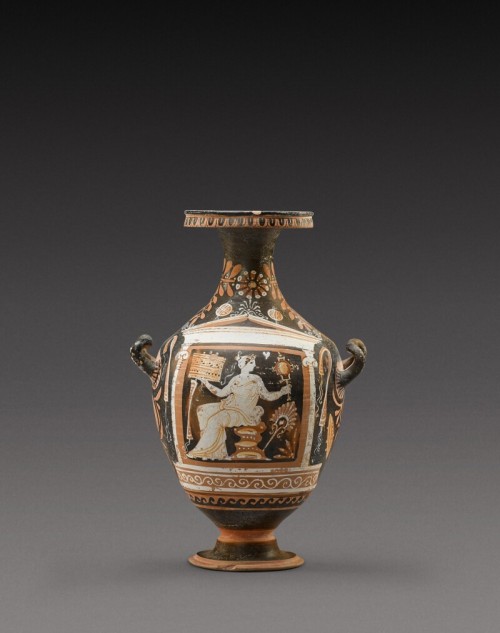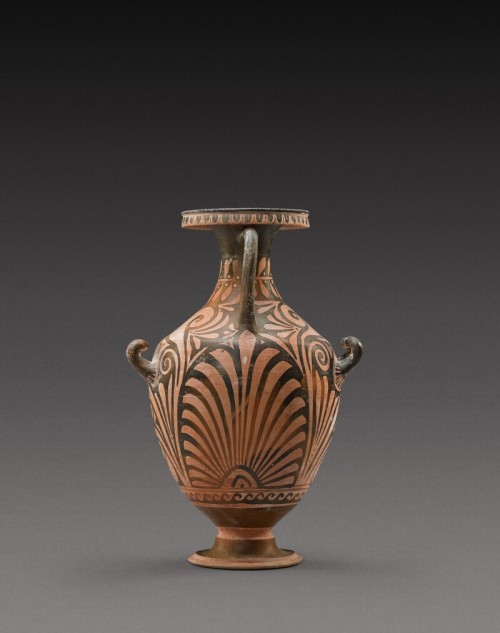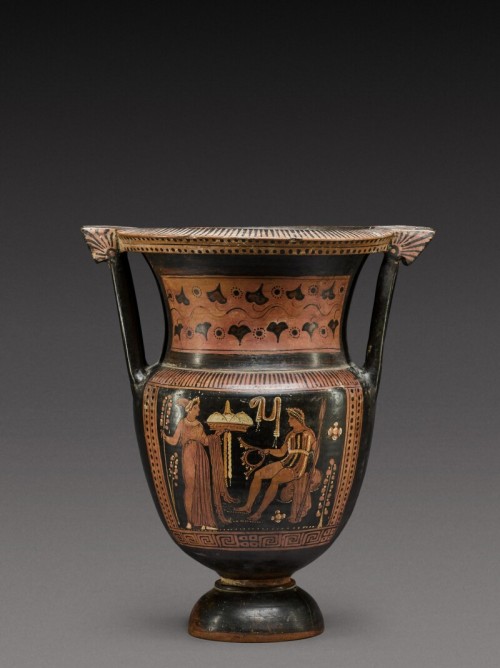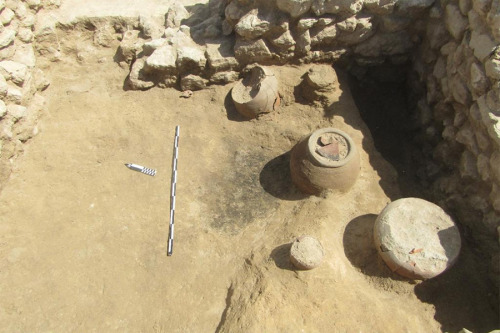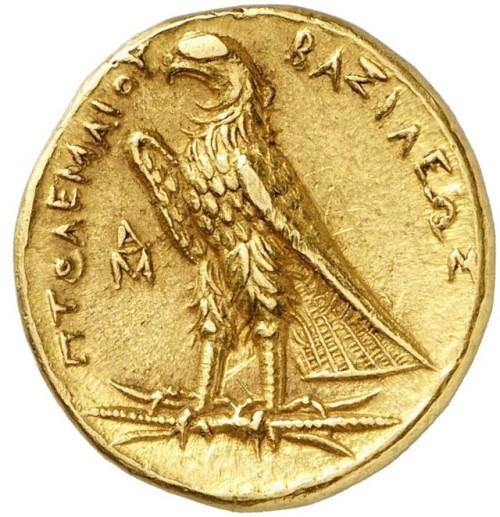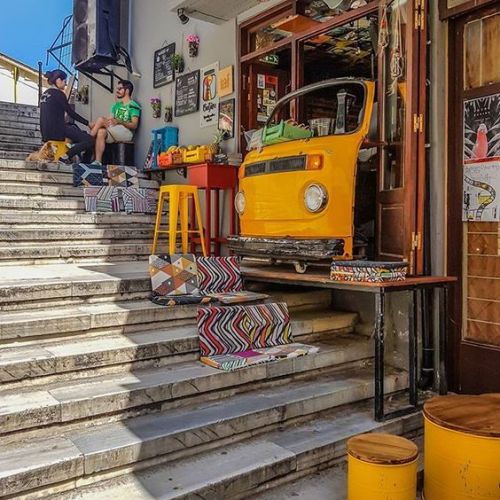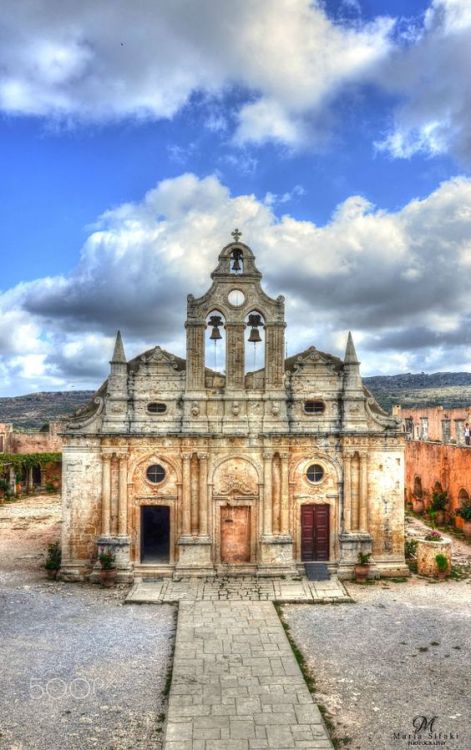#greek history
A collection of free Hellenic History PDFs, from the Bronze Age to Modern day Greece. If you are interested in works about Ancient Greek Religion, please look through my blog as I give them away freely.
if you struggle with opening a PDF or need a pdf that is locked behind a paywall, use sci-hub to access them.
Bronze Age
Cline, E. H. (2012). The Oxford Handbook of the Bronze Age Aegean. OUP USA. [link]
Dickinson, O. (2007). The Aegean from Bronze Age to Iron Age: Continuity and Change Between the Twelfth and Eighth Centuries BC (1st ed.). Routledge. [link]
Harding, A. (2021). Bronze Age Lives. Berlin, Boston: De Gruyter. [link]
Knapp, B. A., & Dommelen, V. P. (2015). The Cambridge Prehistory of the Bronze and Iron Age Mediterranean (Illustrated ed.). Cambridge University Press. [link]
Taylor, Lindsay, (2019) The Snake Goddess Dethroned: Deconstructing the Work and Legacy of Sir Arthur Evans. Honors College. [link]
Archaic Greece
Dillon, M., & Garland, L. (2010). Ancient Greece: Social and Historical Documents from Archaic Times to the Death of Alexander the Great (Routledge Sourcebooks for the Ancient World) (3rd ed.). Routledge. [link]
Raaflaub, K. A., & Wees, V. H. (2012). A Companion to Archaic Greece (1st ed.). Wiley-Blackwell. [link]
Rayor, D. J., & Johnson, W. R. (1991). Sappho’s Lyre: Archaic Lyric and Women Poets of Ancient Greece (First ed.). University of California Press. [link]
Shapiro, H. A. (2007). The Cambridge Companion to Archaic Greece (Cambridge Companions to the Ancient World). Cambridge University Press. [link]
Classical Greece
Kinzl, K. H. (2010). A Companion to the Classical Greek World (1st ed.). Wiley-Blackwell. [link]
Sourvinou-Inwood, C. (1996). “Reading” Greek Death: To the End of the Classical Period. Clarendon Press. [link]
Hellenistic and Roman Greece
Bugh, G. R. (2006). The Cambridge Companion to the Hellenistic World (Illustrated ed.). Cambridge University Press. [link]
Erskine, A. (2005). A Companion to the Hellenistic World. Wiley-Blackwell. [link]
Stevens, K. (2019). Between Greece and Babylonia: Hellenistic Intellectual History in Cross-Cultural Perspective (Cambridge Classical Studies). Cambridge University Press. [link]
Byzantine Greece
Garland, L. (2011). Byzantine Empresses: Women and Power in Byzantium AD 527–1204 (1st ed.). Routledge. [link]
Hussey, J. M., & Louth, A. (2010). The Orthodox Church in the Byzantine Empire (Oxford History of the Christian Church) (Illustrated ed.). Oxford University Press. [link]
K. (2021). Alexiad (09) by Komnene, Anna [Paperback (2009)]. Penguin Clasics, Paperback(2009). [link]
Lauritzen, F. (2013). The Depiction of Character in the Chronographia of Michael Psellos (Studies in Byzantine History and Civilization). Brepols Publishers. [link]
Neville, L. (2019). Byzantine Gender (Past Imperfect) (New ed.). Arc Humanities Press. [link]
Psellos, M., & Kaldellis, A. (2006). Mothers and Sons, Fathers and Daughters: The Byzantine Family of Michael Psellos (Michael Psellos in Translation) (1st ed.). University of Notre Dame Press. [link]
Psellos, M., Papaioannou, S., & Barber, C. (2017). Michael Psellos on Literature and Art: A Byzantine Perspective on Aesthetics (Michael Psellos in Translation) (1st ed.). University of Notre Dame Press. [link]
Shepard, J. (2009). The Cambridge History of the Byzantine Empire c.500-1492 (1st ed.). Cambridge University Press. [link]
Venetian possessions and Ottoman rule (15th century – 1821)
Davies, S., & Davis, J. L. (2007). Between Venice and Istanbul: Colonial Landscapes in Early Modern Greece (Hesperia Supplement) (Volume XL ed.). American School of Classical Studies at Athens. [link]
Halstead, H. (2018). Greeks without Greece: Homelands, Belonging, and Memory amongst the Expatriated Greeks of Turkey (Routledge Studies in Modern European History) (1st ed.). Routledge. [link]
Naar, D. E. (2016). Jewish Salonica: Between the Ottoman Empire and Modern Greece (Stanford Studies in Jewish History and Culture) (1st ed.). Stanford University Press. [link]
Vionis, A. K. (2013). A Crusader, Ottoman, and Early Modern Aegean Archaeology: Built Environment and Domestic Material Culture in the Medieval and Post-Medieval Cyclades, … Studies Leiden University Press). Leiden University Press. [link]
Zarinebaf, F., Bennet, J., & Davis, J. L. (2005). A Historical and Economic Geography of Ottoman Greece: The Southwestern Morea in the 18th Century (Hesperia Supplement). American School of Classical Studies at Athens. [link]
Modern Greece
Avdela, E., Gallant, T., Papadogiannis, N., Papastefanaki, L., & Voglis, P. (2017). The social history of modern Greece: a roundtable. Social History,43(1), 105–125. https://doi.org/10.1080/03071022.2018.1394037[link]
Beaton, R. (2004). Folk Poetry of Modern Greece (Revised ed.). Cambridge University Press. [link]
Featherstone, K., Papadimitriou, D., Mamarelis, A., & Niarchos, G. (2011). The Last Ottomans: The Muslim Minority of Greece 1940–1949 (New Perspectives on South-East Europe) (1st ed. 2011 ed.). Palgrave Macmillan. [link]
Honor, Masculinity, and Ritual Knife Fighting in Nineteenth-Century Greece. (2000). The American Historical Review. Published. https://doi.org/10.1086/ahr/105.2.359[link]
McGuckin, J. A. (2010). The Orthodox Church: An Introduction to its History, Doctrine, and Spiritual Culture (1st ed.). Wiley-Blackwell. [link]
Books That Cover Multiple Eras
Carney, E. D., & Müller, S. (2020). The Routledge Companion to Women and Monarchy in the Ancient Mediterranean World (1st ed.). Routledge. [link]
James, S. L., & Dillon, S. (2015). A Companion to Women in the Ancient World (Blackwell Companions to the Ancient World) (1st ed.). Wiley-Blackwell. [link]
Llewellyn-Jones, L. (2003). Aphrodite’s Tortoise: The Veiled Woman of Ancient Greece (Illustrated ed.). Classical Press of Wales. [link]
Mackridge, P. (2010). Language and National Identity in Greece, 1766–1976 (Illustrated ed.). Oxford University Press. [link]
Ober;, J. (2021). The Rise and Fall of Classical Greece (The Princeton History of the Ancient World) by Josiah Ober (2015–05-04). Princeton University Press; First Edition edition (2015–05-04). [link]
Petropoulos, J. (2014). Greek Magic (Monographs in Classical Studies) (1st ed.). Routledge. [link]
Rawson, B. (2011). A Companion to Families in the Greek and Roman Worlds (Blackwell Companions to the Ancient World Book 86) (1st ed.). Wiley-Blackwell. [link]
Tziovas, D. (2016). Greek Diaspora and Migration since 1700. Taylor & Francis. [link]
I hope this collections helps y’all with knowing more about Greek History - I haven’t read them all, and that is something I plan to fix. Feel free to recommend more books, knowledge is good!
Ercole Farnese
Roman marble copy of a bronze original by Lysippos (4th c. BC)
3rd century AD
Museo Archeologico Nazionale di Napoli
© Ph. Luigi Spina
Post link
Afrodite Sosandra
Roman marble copy of an original attributed to the Greek sculptor Calamis (ca. 460 BC).
2nd century AD
National Archeological Museum, Naples
© Ph. Luigi Spina
Post link
An Apulian Red-figured Hydria
Circa 350-330 B.C.
Painted with a woman seated within a naiskos and holding a mirror and a casket, the details in added white and yellow.
Height 43 cm.
Sold: 5,040 GBP 12/2020
Post link
An Apulian Red-figured Column Krater, attributed to the Painter of the Truro Pelike.
Circa 350-330 B.C.
Painted in front with a standing woman and a seated youth, and on the back with two youths flanking a plant, the details in added white and yellow.
Height 44.2 cm.
Sold: 6,930 GBP 12/2020
Post link
Ancient Greek Pottery Workshop and Storage Facility Discovered in Alexandria
An Egyptian archaeological mission uncovered an Ancient Greek pottery workshop and a storage building at Tabet Al-Motaweh area to the west of Alexandria.
Mostafa Waziri, secretary-general of the Supreme Council of Antiquities, said a collection of kilns were discovered in the workshop, including two engraved in rocks, according to Ahram.
The first has a vaulted entrance through which workers passed to line up amphora in rows. The entrance is covered with clay and fragments.
Studies revealed the workshop was used throughout different periods. The northern side was used as a kiln for cement during the Byzantine time.
It was completely destroyed during the Middle Ages and converted into a cemetery. Inside one of the kilns a burial for a pregnant woman was uncovered.
Ayman Ashmawi, head of the Ancient Egyptian Antiquities Sector, said a storage was also unearthed containing a large collection of clay pots used for cooking.
The storage building comprised dorms for workers during the Ptolemaic era. It has 13 chambers, including one for religious rituals and prayers, another used as a kitchen, and a third for selling pots.
Inside the cooking pots bones of cattle and fish were found.
A large collection of Ptolemaic coins bearing the faces of Alexander the Great, deity Zeus and Queen Cleopatra were found on the floor of one of the chambers, while two large terracotta statues for deity Harpocrates and a yet unknown king in a very bad conservation condition were discovered in another chamber.
Hunting hooks and deity statues were found along with 100 catacombs.
Post link
Coin of Ptolemy II, Alexandria, Egypt, 280-279 BC
A gold pentadrachm with the diademed bust of Ptolemy II wearing an aegis is on the obverse - An eagle on a thunderbolt is on the reverse with a monogram in the field and ΠTOΛEMAIOY – ΒΑΣΙΛΕΩΣ written around. Sold at auction for around 11,421 USD.
Ptolemy II Philadelphus was the king of Ptolemaic Egypt from 283 to 246 BC. He was the son of the founder of the Ptolemaic kingdom, Ptolemy I Soter, a former Macedonian general to Alexander the Great. Ptolemy II extended his inherited power by skillful diplomacy and by developing agriculture and commerce. He made Alexandria a leading center of the arts and sciences. Read more about Ptolemy II here.
Post link
Athens - Ancient and Modern
“Hanging out in Athens at the site of the first ever Olympics, then dipping back into modernity for a air-conditioned café and frappé. Just one of the many reasons Athens in such an incredible city!” - charliepr1ce
Post link
I really hate it when fiction, when trying to be gritty and establish that their setting is free of frippery, or the land is super duper poor, etc, will say that the currency, rather than being gold or silver, is like ‘iron’ or ‘steel’ when like…
leaving aside the fact that iron rusts and such, it’s also… well, useful. You have better things to do with Iron then stuff it in a vault. Make shit out of it.
Gold? Pretty much only use for gold other then money (until we started using it in computer chips and stuff) is to sparkle. You can’t use it for much beyond a store of value.
There’s a reason why human society picked gold, and not something else.
I think they’re usually trying for a medieval-fantasy version of “bullets are currency”, seen in some post-apocalyptic settings.
And copper and bronze coins were used in Bronze Age societies, so there is a precedent for using the same thing for money as for making weapons and tools out of. (Copper and bronze are a lot easier to work than iron, though, so it’s easier to convert your currency into usable material.)
Apparently China sometimes used iron coins in place of copper, when copper was too expensive—like making ammunition with steel casings instead of brass.
Didn’t Sparta have iron currency?
Apparently that is either a fabrication or a legend, in Plutarch (he attributes the use of iron coins to Lycurgus but Lycurgus lived before Greece had any coins), or else someone, Plutarch or his source, misunderstanding “cooking spits” (obeloi) as “coins” (oboloi)—I think the words are related, and it’s possible that Spartans used cooking spits as a convenient unit of account given the communal feasts were central to their culture. Certainly, though, trading with others, Spartans used the same coins as the rest of Greece.
I would suspect Sparta’s main internal exchanges were barter, given the tightly controlled command economy; since almost every working person in Sparta was a slave (mostly state-owned helots but also privately-owned slaves like in the rest of Greece) or a free noncitizen protegee of one of the elite (Sparta’s only citizens were its nobles), there was no real need for a medium of exchange beyond the goods those slaves and protegees would give their elite masters and patrons, who could relatively conveniently just move the goods around among themselves.
The weird thing about the Spartan economy is it was illegal for the elite to have sources of revenue besides their state-allotted farmland, and an elite who could no longer afford to contribute to the aforementioned communal feasts was permanently stripped of status. (There was no way to rejoin the elite class, or otherwise enter it from outside, which meant its numbers permanently declined.)
Interesting. You learn something new every day, I guess.
That last bit about the elites seems like an extremely short-sighted system.
Oh, it was. One of the things that led to the downfall of sparta was how small the elite warrior class was getting. But the notion was to try to keep all the citizens equal to prevent like, class conflict or something within the elite that the slaves would take advantage of. So it came from a place that made sense.
We have to remember that in Sparta, the slave to citizen ratio was insane, like 7 to 1, according to Herodotus. You don’t get numbers like that anywhere else until the Carribean Sugar plantations. And given how it turned out for the French in Haiti, the Spartans were right to be paranoid about that.*
—
*For reference, the Haitian revolution was presaged by a conflict within the white planter class against France that eventually cracked the system wide open and allowed the slaves to take over, winning legal freedom/citizenship within the French Republic (since this was happening at the same time as the French Revolution) in the process, and then later full on Independence thanks to Napoleon being a complete idiot about Haiti and L'Ouverture.
So I was listening to a podcast on ancient history that focused on queer women in Greece and Rome and I wanted to get a sense for how widespread are some of the assumptions we make about ancient sexuality.
Those who have studied gender and sexuality in Greece and Rome have surely come across the most popular theory addressing the definitions of ancient sexuality, that modern conceptions of sexuality (hetero- and homosexuality) were nonexistent and instead ones sexuality was defined by specific sex acts. Normative sexuality involved a binary between the one penetrating and the one being penetrated. Thus, for a man, penetrating a woman or another man was within the bounds of normative sexual behavior, as was a woman being penetrated. This is obviously penis-centered in nature and thus anything not involving a penis falls outside the bounds of normative sexuality, or at least that is what we assume. We do not have enough historical evidence to make claims about how sexual acts between women were viewed by society in Greece and Rome (as the podcast did) because our understanding of ancient sexuality is focused on this binary penetrator and penetrated.
For all we know, women could engage in sexually pleasurable relationships with other women and no one batted an eye (I am not saying they did, just that it could have been the case). What I am saying is that based on our source material it is equally possible that pleasure between women was not talked about because it was not seen as anything unordinary.
Martial has two epigrams about a “monstrous” woman (Bassus) who has sex with other women, but his gripe is that she tries too much to be “like a man” not specifically that she has sex with women.
One of the other things that really bothered me about the podcast was the assumption that to be a penetrator meant to absolutely dominant, and thus that being penetrated automatically must mean being on the receiving end of something hostile and violent. This might be the end result of using terminology like dominant and submissive for ancient sexual roles which have taken on specifically modern connotations. Nevertheless, it is an absurd assumption to make and leads to some equating the majority of ancient sex with rape.
Lastly, to characterize ancient pederasty as “heteronormative” is just a bad take.
Ο ΠΑΠΑ-ΧΑΡΆΛΑΜΠΟΣ ΔΙΟΝΥΣΙΑΤΗΣ (Elder Haralambos of Dionysiou) by Μιχαηλ Ε.Κουκα carved into humanely, ethically sourced ivory.
Born in Russia in 1910 to Pontic Greek immigrants he was known as capable, sociable, deeply ascetic, and vigilant.
Despite being hesitant at first, Elder Haralambos became Abbot of Ιερά Μονή Διονυσίου (Holy Monastery of Dionysiou) before reposing in 2000. His guidance was marked by frequent partaking of Holy Communion, noetic prayer, and the life of hesychasm.
(My thanks to Μιχαηλ Ε.Κουκα and Lynchos for the gorgeous icon and in-depth biography)
Post link
writing a dramatic performance about the tomb of Philip II called The Vergina Monologues

“There are several species of Hellebore. The name comes from the Greek words ‘elein’ (to injure) and 'bora’ (food), indicating that Helleborus is poisonous. In some belief systems, it’s been believed to be a purgative, sometimes of bad things generally, used for things like protecting livestock from evil spells & (in powdered form) for invisibility. According to herb lore, the roots of the hellebore plant are are used to treat melancholy diseases & madness.
The original name for Hellebore was
"Melampodium.” According to the Greek historian Pliny, the plant was named for the soothsayer Melampus who used it to cure depression in ancient times. On a happier note & in spite of poisonous nature of the plant, it is often called the “Christmas Rose” or “Christ herbe” because it blooms in winter.
Caption chosen separately.
Drawing titled 'Heleborus’ by @cat.schappach
Istanbul pogrom (6-7 Eylül olayları, Septemvriana) is the violent attacks against Christian (mainly Greek but also a significant Armenian population) and Jewish residents of Istanbul in 1955 by armed groups of Turks. It is unclear how many people died (sources vary between 11 and 15), or injured (between 30 - 300) but the main consequence of the attacks were the migration of thousands of mainly Greek (but also Armenian and Jewish) families from Istanbul and Turkey, where they had been living for hundreds of years. The number of buildings damaged is 5.300 by official accounts, and 7.000 according to others.
TheTactical Mobilization Group (Turkish branch of Cold War anticommunist Counter-Guerrilla / GLADIO) and the Democrat Party government at the time were behind the attack. It was confessed by those involved (like Sabri Yirmibeşoğlu, who held high ranks in the army and the National Security Council (the continuation of the anticommunist establishments)) that the Special Warfare Department armed the people and encouraged them in disguise, leading them to the riots.
The context for the attacks was the ongoing tensions regarding Cyprus. EOKA led by Grivas has attacked English and Turkish residents of the island, causing anger in the Turkish public. Economic hardships were putting a strain on the people and there was growing discontent with the ruling Democrat Party, and the prime minister Menderes’ initially-liberal policies towards non-Muslims were growing stricter.
Meanwhile, Turkish, English and Greek representatives had started meeting in conferences in England starting August 29, and Turkish press and politicians were spreading aggresive and negative propaganda about Rum’s (Greek residents/citizens of Turkey) and Greece.Kıbrıs Türktür Cemiyeti (KTC - ”Cyprus is Turkish” Association) and Türk Milli Talebe Federasyonu (Turkish National Students’ Federation) were leading this negative campaign. The leader of KTC, Hikmet Bil was a writer in the popular Hürriyet newspaper and it was known that other leaders had close contact with the national intelligence agency (MİT, then MAH). Hürriyet was writing that Greeks in İstanbul were sending money to ENOSIS gangs of Cypriot Greeks.
The Turkish representative in the London conferences, foreign minister Fatin Rüştü Zorlu sends Bil a telegraph saying that he wants to use the “strong voice of the Turkish public” as an argument at the conference - almost asking for him to initiate the attacks.
During the day of September 5, news saying 3 Rum’s were exposed as spies circulate. A Greek youth is beaten up in Taksim, central neighborhood of İstanbul and a poster saying “Cyprus is Turkish” is left at the Greek patriarchate in İstanbul.
Around noon on September 6, radios broadcast that Atatürk’s house in Thessaloniki has been bombed (in reality, a small explosive thrown into the garden had broken two windows). A Democrat Party (DP) supporting newspaper called “Ekspres” prints 290.000 copies (compared to its usual 20.000) and spreads the news about the “bombing” all across the city. It has been claimed that the newspaper had stocked paper prior to this, in preparation. This issue of Ekspres had a quote by the Secretary General of KTC saying that they would make the ones responsible pay for this. It is known that DP officials were also encouraging the people to take to the streets.
People armed with identical sticks (indicating that they were systematically armed) stone and raid non-Muslim owned shops in İstiklal Avenue and then other districts. Eyewitnesses say that the shops were marked previously and the attackers had lists of people to target, and were told not to kill. More than 200 women are raped by the rioters.
On September 6, the government declares martial law (which had already been considered two weeks ago to quell opposition) but cannot stop the rioters, the riots grow and continue on September 7 as well. President Celal Bayar says that they “overdid it” to the interior minister Namık Gedik when he sees the damages.
According to the US Consulate, %59 of the businesses attacked were Greek, %17 were Armenian, %12 were Jewish and %10 were Muslim owned. Of the houses, %80 were Greek, %9 were Armenian, %5 were Muslim and %3 were Jewish. The Swedish Embassy, foreign businesses and Armenian and English cemeteries were attacked as well. 73 churches and 23 minority schools were vandalized. Father Chrysanthos Mandas was burnt alive in an arson attack on a church, other church officials were beaten viciously and tortured- a 75 year old priest was stripped naked in the street and was dragged behind a car. Eyewitness and journalist Noel Barber says a priest was scalped. Famous photographer Ara Güler and famous football player Lefter Küçükandonyadis have also been targeted, along many other notable people.
There are many accounts of Turkish families in these neighborhoods protecting their neighbors, hiding their children and putting themselves in risk while defending the Greek, Armenian and Jewish families under attack. An airforce captain Reşat Mater (later become Commander of the Air Force) who was off duty hid his neighbors, and then fought rioters with the group of neighborhood boys armed with domestic items, succesfully forming a barricade. Survivors tell stories of even policemen defending them agains rioters. However, the attackers were 200.000 people strong, with people transported in from other cities, and there were many cases of Turkish storeowners and homeowners telling on their non-Muslim neighbors too.
The government responds by arresting known leftists and going on a Communist hunt after the attacks, claiming that they were responsible.KTC was closed down and more than 5000 people were arrested. 34 trade unions were dissolved, the interior minister Namık Gedik resigned. Although there was solid evidence linking KTC leaders to the riots, on September 12 the government started pointing at Turkish Communists, famous writer Aziz Nesin was amongst the those arrested. They were released in December of the same year. Compensations were paid by the government but they weren’t nearly enough to cover the damages, and the communities were wounded and traumatized beyond compensation, leading to mass immigrations from the city. The following years also saw the rise of anti-Greek policies and sentiment, further decreasing the Greek population in İstanbul to its current number of approx. 2500 people.
Michael Stewart from the British Embassy in Ankara said that DP representatives were linked with the attacks. Influenced by the Cold Waratmosphere, US and Britain did not show a significant reaction to the attacks or Menderes, as Turkey was aligned with them and a member of NATO.
Menderes and Bayar were charged after the 1960 coup against the government, the pogrom was a part of the charges. They were executed by hanging.
Sources:
https://en.wikipedia.org/wiki/Istanbul_pogrom
http://t24.com.tr/yazarlar/yilmaz-murat-bilican/6-7-eylul-olaylari-ve-devletin-fas-olmasi,7387
https://tr.wikipedia.org/wiki/6-7_Eyl%C3%BCl_Olaylar%C4%B1
Post link
Why doesn’t Tumblr talk more about Alcibiades?
- “All this statecraft and eloquence and lofty purpose and cleverness was attended with great luxuriousness of life, with wanton drunkenness and lewdness, with effeminacy in dress, — he would trail long purple robes through the market place, — and with prodigal expenditures.”
- A student and possibly-lover of Socrates, and saved his life in battle once. Also the Symposium (you know, with the story about how people used to be two people joined together) is full of their soap opera relationship drama about Alcibiades trying to seduce Socrates.
- In the middle of being a successful Athenian general in the Athens-Sparta war, he got exiled for being an atheist and smashing up some sacred statues of dicks.
- Rather than go live quietly in exile he switched sides and joined the Spartans until they kicked him out too for sleeping with the King of Sparta’s wife.
- But he was such a good general that Athens asked him back to win more battles for them, only to kick him out again just before the war ended.
- Nevertheless showed up at the Athenian’s last stand battle to give them some good tactical advice, which they ignored and promptly got their asses kicked.
- Was finally murdered a year later, either by Spartan assassins or by the angry family of a girl he’d hooked up with.
- Basically his entire life was being kickass and flamboyant and sleeping with inappropriate people and getting kicked out of countries.
- Oh, and he had the decks of his boats removed so he could string bedding across the gap and build a comfortable nest to sleep in.
WHY ARE WE NOT TALKING ABOUT THIS.
Peak dumbass energy
apollo x icarus
change my mind
Laskarina Bouboulina (1771-1825) was a Greek revolutionary and naval commander.
AnArvanite Greek born in a Constantinople prison, Bouboulina was the daughter of a ship captain from Hydra island. When she was a child her father died in the Orlov Revolution, a failed Greek rebellion against Ottoman rule. After this her extensive family moved to the island of Spetses. She married twice, first to a wealth shipowner and later to a Captain Bouboulis, whose name she took. When Bouboulis was killed by pirates, Bouboulina took over his trading business and began to amass her own fleet, commissioning the construction of four new ships.
In 1816 the Ottomans tried to seize Bouboulina’s property as her husband had fought with the Russians against them during the Turko-Russian wars. She managed to thwart these attempts with the help of Count Pavel Strogonov, the Russian Ambassador in Constantinople. However she was actively working against the Ottomans as a member of the Filiki Eteria, a secret organisation plotting to overthrow Ottoman control over Greece. Her principal role was as a smuggler, bringing food, weapons, and ammunition into Spetses. She also used her wealth to construct her own personal warship named the Agammennon, one of the largest vessels of the period.
In early 1821 the Filiki Eteria and other revolutionaries began the Greek War of Independence with support from Russia and other European powers. Twelve days before the war started Bouboulina was the first to raise the revolutionary flag, flying a modified Greek flag from the mast of the Agamemnon. She assisted the people of Spetses in their revolt before sailing with eight ships to Nafplion to begin a naval blockade. She later took part in the blockade and capture of the coastal cities of MonemvasiaandPylos. She was also present at the fall of Tripoli in September 1821, and during the subsequent attack on the Ottoman garrison she gave protection to the female members of the sultan’s household. In the aftermath of the battle she bore witness to the creation of the new Greek state, the First Hellenic Republic.
Over the course of the war Bouboulina was considered an equal with other revolutionary commanders and was involved in planning their strategy. She became good friends with General Theodoros Kolokotronis and their children later married. She settled in Nafplion, the new Greek capital, until 1824 when the Greek factions turned on each other in civil war. Kolokotronis was imprisoned by his former allies and Bouboulina was arrested twice due to her association with him. She was exiled to Spetses, her fortune having been exhausted from fighting for Greek independence.
In 1825 Bouboulina was killed in an argument with the head of the Koutsis family, whose daughter Bouboulina’s son had eloped with. While confronting the family from her balcony she was shot through the head and died instantly. After her death the Emperor of Russia gave her the honorary rank of Admiral in the Russian Navy, at the time the only woman in history to hold the title. Today she is remembered as a Greek national hero without whom the Greeks might never have gained their independence.
Post link



